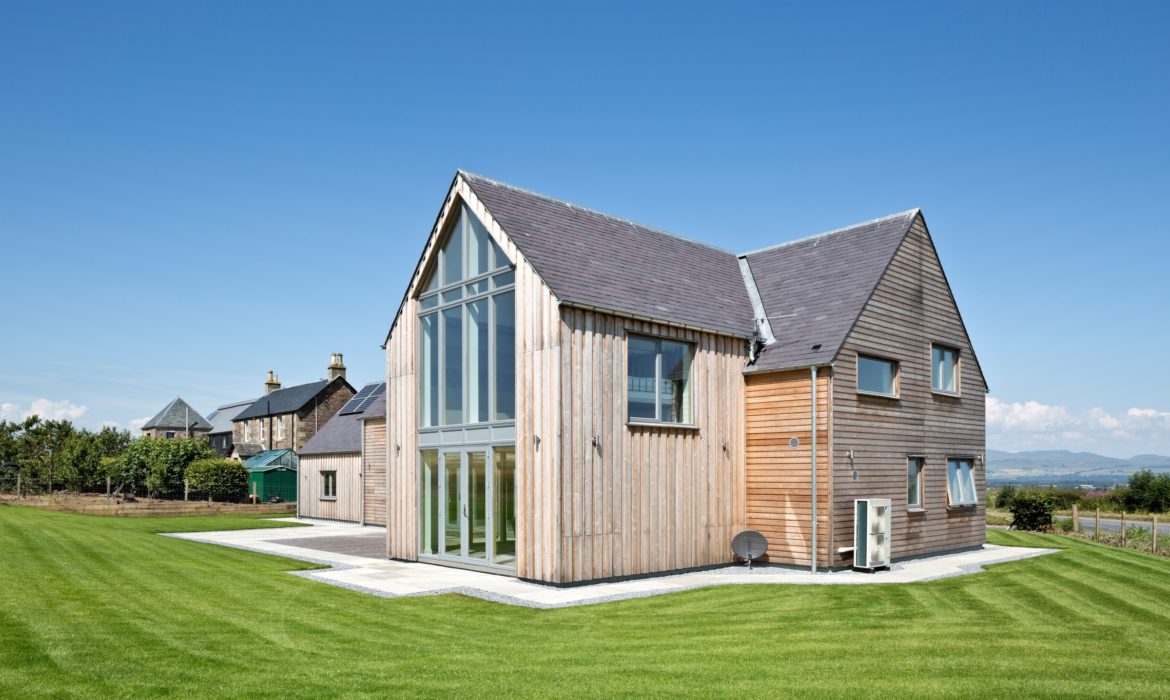The Self Build industry has stepped up to the challenge as the world becomes increasingly aware of the importance of sustainable living and reducing carbon footprints. Homeowners and builders alike are ditching old-fashioned design principles and traditional build methods for renewable energies, innovative technologies and emerging low-energy standards.
A true Self Build is about preparing for the future, which is why we're going to explore the top five trends in Self Build that will keep you in the know for 2025 and the years beyond.
RENEWABLE ENERGY INTEGRATION
Renewable energy is a cornerstone of sustainable Self Build projects. Embracing renewable sources like solar panels, wind turbines, and geothermal systems allows homeowners to generate their energy while significantly reducing dependence on finite fossil fuels. Advances in solar technology have made it more accessible and cost-effective now for self-builders to install solar panels on rooftops.
Similarly, wind turbines are now available on small scales suitable for residential use, providing an excellent solution for properties in windy regions. Geothermal systems are gaining popularity due to their energy-efficient heating and cooling capabilities, utilising the earth’s natural heat to maintain comfortable indoor temperatures year-round. The integration of these renewable energy sources not only lowers utility bills but also makes self-built homes more environmentally friendly. Estate agents are seeing buyers spend an average of 15% more on energy-efficient properties, which adds another incentive to taking the low-energy leap.
Check out our guest blog with eco expert Tim Pullen on how to choose the best renewable energy here!

SMART TECHNOLOGY FOR EFFICIENT LIVING
Smart technology is revolutionising the way we interact with our homes. From smart thermostats and lighting to integrated home automation systems, self-builders embrace these technologies to optimise energy usage and make things a little more convenient.
Smart thermostats learn the occupants’ behaviour, adjusting temperature settings accordingly and saving energy in the process. Homeowners can control lighting systems remotely and, therefore, can adjust brightness levels based on natural light availability, further reducing energy consumption.
Not every new technology has to revolutionise your space. Simple gadgets like smart plugs and motion sensors can turn lights and power outlets on and off with ease, and can cost as little as £10! It's certainly something to consider.
Integrating these technologies into a cohesive system allows homeowners to monitor and manage their energy usage, making Self Builds more efficient and sustainable.
Check out our article on the cost of smart home technologies here!
The Passivhaus standard is gaining traction in Self Build circles as it offers exceptional energy efficiency and a comfortable living environment. Passivhaus, originating from Germany, is a rigorous construction standard that emphasises airtightness, high levels of insulation, and mechanical ventilation with heat recovery. By sealing the building envelope effectively, a Passivhaus minimises heat loss and heat gain, resulting in remarkably low energy demands for heating and cooling.
These homes often require very little additional heating and cooling, relying on the homeowners and internal gains from appliances and body heat to maintain comfortable temperatures.
As self-builders strive for long-term sustainability, Passivhaus construction becomes an attractive option for reducing energy consumption and overall environmental impact.
Find out more on our Passive House page here!

RETROFITTING FOR SUSTAINABLE UPGRADES
In the pursuit of sustainability, retrofitting existing homes has become a significant trend in the self-build community. Homeowners are recognising the environmental impact of demolishing and rebuilding and opting to renovate and upgrade their current properties.
'Isn't this just a fancy word for a renovation?' you may ask. While a renovation focuses on the aesthetics of your space, a true retrofit goes a step further, and focuses on improving performance and efficiency through improving your buildings performance.
Retrofitting includes:
- Improving insulation
- Upgrading windows and doors
- Installing energy-efficient heating and cooling systems
- Integrating intelligent technologies
You can find out more about Retrofitting here!
Our in-house Passivhaus specialist and Associate Architect, Iga Panczyna, can provide any potential sell builder with further knowledge and insight into how you achieve Passivhaus standards in your home design and information about upgrading existing homes through retrofit. Book your free consultation here.

EMPHASIS ON SUSTAINABLE MATERIALS
Sustainable materials are crucial in Self Build projects committed to reducing environmental impact. The cost of materials are constantly increasing, which is why builders are turning towards eco-friendly and low-carbon construction materials to create more sustainable, cost-effective homes. For instance, reclaimed wood and recycled steel contribute to a unique aesthetic and minimise the demand for new raw materials.
Additionally, using locally sourced materials reduces transportation emissions and supports regional economies. Self-builders are also exploring innovative materials like bamboo, which is fast-growing and highly renewable, and hempcrete, which has excellent insulation properties and sequesters carbon dioxide during production. Self Build projects become more eco-conscious by prioritising sustainable materials and promoting a greener construction industry.
You can find out more about sustainable construction methods here!
We've worked on over 500 projects and AC Architects, and we know the future of self-build is leaning towards the direction of sustainability and innovation. As the world faces environmental challenges and an increased need for homes , self-builders take responsibility by incorporating renewable energy, smart technology, Passivhaus construction, and sustainable retrofitting into their projects.
By embracing these top trends, self-builders are creating energy-efficient and eco-friendly homes and leading the way towards a more sustainable and resilient future for the entire housing industry.




